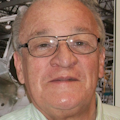Aircraft painting is one of those jobs that frequently gets short shrift when it comes to saving money on hiring skilled labor. In my experience, this is true whether the aircraft owner or operator is a major airline or repair station or a private owner of a general aviation aircraft. Many people seeking a paint job for their aircraft seem to think that anyone who can wield a paintbrush or spray gun can paint an aircraft. Many maintenance organizations apparently think the same thing when they assign untrained and unskilled workers to the task of aircraft painting, but that is a dangerous assumption to make.
Many jobs that may have limited safety impacts in other situations can have very significant impacts in aviation if not performed properly. Aircraft painting is one of them. It is a skilled job that requires knowledge and proper training. Most importantly, workers who paint aircraft need to have sufficient knowledge of aircraft control surfaces, including hinge points, and the location of static ports and pitot tubes, both of which control vital instruments. They need to not only know where these areas are but also the critical functions they perform in safe flight.
And it’s a job that requires proper preparation to prevent paint from getting into sensitive areas. In fact, the preparation can frequently take more time than the paint job itself. Knowing what to tape and cover is, of course, critical. Knowing not to use razor knives to trim masking tape is also important. I have seen unskilled painters score aircraft surfaces; these scores can lead to corrosion and cracking of the aluminum skin.
One case that came to my attention when I served as an NTSB member involved dozens of aircraft (mostly 737s and a few 747s) that had to be prematurely retired because bad paint jobs were suspected to have deeply scored the aircrafts’ skin to the point that it was more economical to scrap the aircraft than to try to repair or replace the skin. One of the score lines ran from the main entrance door clear to the tail. Investigators believed that the various paint jobs resulted from changes in aircraft operators, which caused changes in names and color schemes.
Improper painting can and has caused aircraft incidents and may have also been a factor in aircraft accidents. One egregious GA paint job I saw was at a small, uncontrolled field where a pilot on landing reported difficulty in controlling the aircraft. A subsequent inspection indicated that the likely cause of the problem was the improper touch up of a Piper Tri-Pacer. Someone, through negligence, lack of knowledge or skill, or all three, had allowed paint to run into an aileron hinge resulting in stiff movement of the aileron. Hence the difficulty that the pilot experienced on landing.
Since cost-saving measures usually mean that A&P mechanics will not actually be painting aircraft, they are frequently assigned to supervise. This means that the burden of ensuring that workers are properly trained in the importance of proper prep and painting falls on them.
About the Author

John Goglia
John Goglia has 40+ years experience in the aviation industry. He was the first NTSB member to hold an FAA aircraft mechanic's certificate. He can be reached at [email protected].
John Goglia is an independent aviation safety consultant and Adjunct Professor at Vaughn College of Aeronautics and Technology and regular monthly columnist for four aviation trade publications. He was an airline mechanic for more than 30 years. He has co-authored two text books (Safety Management Systems in Aviation, Ashgate Publishing 2009 and Implementation of Safety Management Systems in Aviation, Ashgate Publishing 2011).